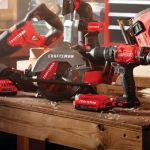In the world of power tools, the source of power is as crucial as the tool itself. The power supply is the lifeblood that drives these tools, enabling them to perform tasks ranging from drilling holes to cutting metals. But what is the most common power supply for power tools? This article aims to delve into this question, providing an in-depth analysis of the power supplies that keep our power tools running.
The most common power supply for power tools is electricity, either through a corded connection or a battery pack. However, the choice between these two options depends on several factors, including the tool's intended use, the user's mobility needs, and the power requirements of the tool.
Corded Power Tools: The Traditional Powerhouse
Corded power tools, as the name suggests, are tools that draw power through a cord connected to an electrical outlet. They are the traditional choice for heavy-duty tasks that require continuous, high power output. The constant connection to the power grid ensures that these tools can operate at their maximum capacity without worrying about battery life.
However, the cord can limit mobility and may require the use of extension cords for tasks far from an electrical outlet. Safety is also a concern, as the cord can become a tripping hazard or get damaged, leading to potential electrical hazards.
Battery-Powered Tools: The Rise of Cordless Convenience
Battery-powered or cordless power tools have gained popularity due to their portability and convenience. These tools use rechargeable battery packs, typically lithium-ion, providing the freedom to work without being tethered to an electrical outlet.
The power output of battery-powered tools has significantly improved over the years, with high-capacity batteries capable of powering even the most demanding tools. However, they still fall short of the consistent power output provided by corded tools. Battery life is also a concern, especially for prolonged tasks, requiring spare batteries or frequent recharging.
Pneumatic Power Tools: The Industrial Choice
While less common for household use, pneumatic power tools, powered by compressed air, are prevalent in industrial settings. These tools are known for their power, durability, and longevity. However, they require a connection to an air compressor, limiting their mobility and making them less suitable for home use.
In conclusion, the most common power supply for power tools is electricity, either corded or battery-powered. The choice between these two depends on the specific needs of the task at hand. Corded tools offer consistent, high power output for heavy-duty tasks, while battery-powered tools provide the convenience of cordless operation. Meanwhile, pneic tools, with their industrial-grade power and durability, remain a staple in professional settings.



Average Rating